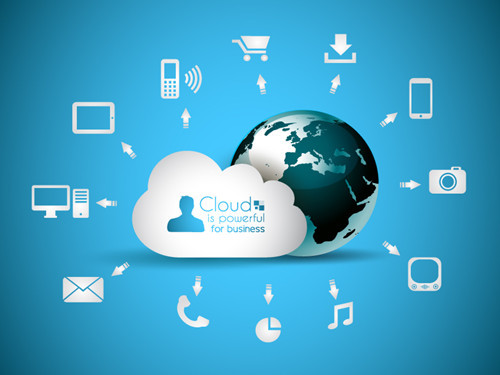
The Internet of Things will drive large-scale investment in data centers, but these data centers will be run by Amazon, Microsoft and Google. It is not difficult to see the winners of the Internet of Things (IoT) and big data trends: cloud computing providers. According to IDC, IoT will need 750% more data center capacity in the next four years.
This means a lot of servers, network devices, etc. But this money will not flow to the industry's traditional suppliers, although some suppliers may provide differentiated products such as Amazon, but this is a small part. After all, cloud computing leaders such as Amazon, Microsoft, and Google usually don't buy products from IBM and traditional data center vendors because their needs are too specialized and require them to build their own or highly customized white box products.
Therefore, although IoT and big data trends will drive new data center investments, they will also change the supplier landscape and may change forever.
The Internet of Things is a natural force Although sensors in wearable devices, automobiles and other devices are attracting public attention, the reality is that data centers are supporting the evolving IoT market. In many ways, collecting data is the easiest part, and processing and analyzing data is a difficult part. This problem requires constant hardware and software to solve.
IDC expects that by 2019, data center capacity will increase by 750% to address IoT data workloads. As Rick Villars, IDC's data center and cloud computing vice president, said, "Given the number of connected devices and the amount of data collected, companies must place their IoT service platform requirements at the data center level rather than a single server or storage device."
However, the problem is that few companies can effectively do this, and many companies are moving in the opposite direction. As IDC pointed out, "The flexibility and scale needed in IoT deployments will ensure that most of this data center capacity is in the service provider (cloud computing) data center."
Cloud computing is ready but don't worry, these cloud computing providers are all looking forward to handling these workloads. In fact, as the Wall Street Journal's Dan Gallagher pointed out, "IDC predicts that by 2018, the cloud computing market will more than double to $127 billion. That's why Amazon, Google and Microsoft are staying at all costs. The reason for this market."
Redmonk analyst Stephen O'Grady said this is mainly due to economies of scale: "The economies of scale that large suppliers bring to the market are huge because they can buy larger quantities and their variable costs are reduced; their fixed costs are Apportioned to a larger number of customers; their relative efficiencies will increase, as scale promotes automation and improvement processes; they can attract and retain talent to solve technical challenges, etc."
Therefore, although success is measured by how many data centers a company builds to handle its size, IoT will grow rapidly and allow a limited number of large vendors to succeed, such as Facebook, Twitter, Google, and Amazon AWS.
Even those suppliers who think they can overcome these powerful opponents, do you really want to fight? Matt Wood, director of AWS data science, says it is very difficult to run complex data science queries using stagnant hardware assets. He believes that resiliency is an essential factor in data science, and it is also true for the Internet of Things.
Your data center supplier is finished no matter who is building the data center, one thing is clear: these cloud computing builders will directly find Taiwanese ODM manufacturers to manufacture hardware that meets their specific needs. These cloud computing vendors will no longer buy off-the-shelf hardware or software: they will treat all aspects of their data center as critical, proprietary knowledge.
In building its own data center, Amazon has significantly reduced costs and improved performance. Why? Because they are trying to remove everything that has nothing to do, only to meet their actual needs.
So what does this mean?
This means that our future cloud computing hardware vendors are actually cloud computing providers that build or purchase their own custom hardware.
In essence, this means that suppliers will withdraw from the enterprise data center market. Although the cloud market is rapidly developing, in short, the data center market is being reshaped: fewer HP and IBM, more AWS and Microsoft.
Our sodium chlorite is used in textile industries also, and sodium bisulfate is a by-product. On the other hand, we provide formulated products used in bleaching, dying, etc. For example, ammonium persulfate, Potassium Persulfate and Sodium Persulfate.
1. ammonium persulfate
Application: Ammonium persulfate is a strong oxidizing agent and can be found in a wide variety of industrial and consumer uses. It appears as a white crystalline powder but may be formulated into cream preparations.
♦ disinfectants and bleaches
♦ bleaching agent for hair colourant and lightener formulations
♦ bleaching and strengthening agent for flour in the baking industry
2. potassium persulfate
This salt is used to initiate polymerziation of various alkenes leading to commercially important polymers such as styrene-butadiene rubber andpolytetrafluoroethylene and related materials.
It is used in organic chemistry as an oxidizing agent, for instance in the Elbs persulfate oxidation of phenols.
As a strong bleaching agent, it is used in hair dye substances as whitening agent with hydrogen peroxide.
It is a Food Additive.
3. sodium persulfate
(1) Used in cleaning and picking of metal surface.
(2) Used in accelerated curing of low formaldehyde adhesives.
(3) Used in modification of starch , production of binders and coating materials.
(4) Desizing agent and bleach activer.
(5) An essential component of bleaching formulations for hair cosmetics.
Luxury Leathers,Printed Pu Leather,Textile Chemical,Leather Chemical
Gemhold (SJZ) Trading Co., Ltd. , https://www.gemhold.cn